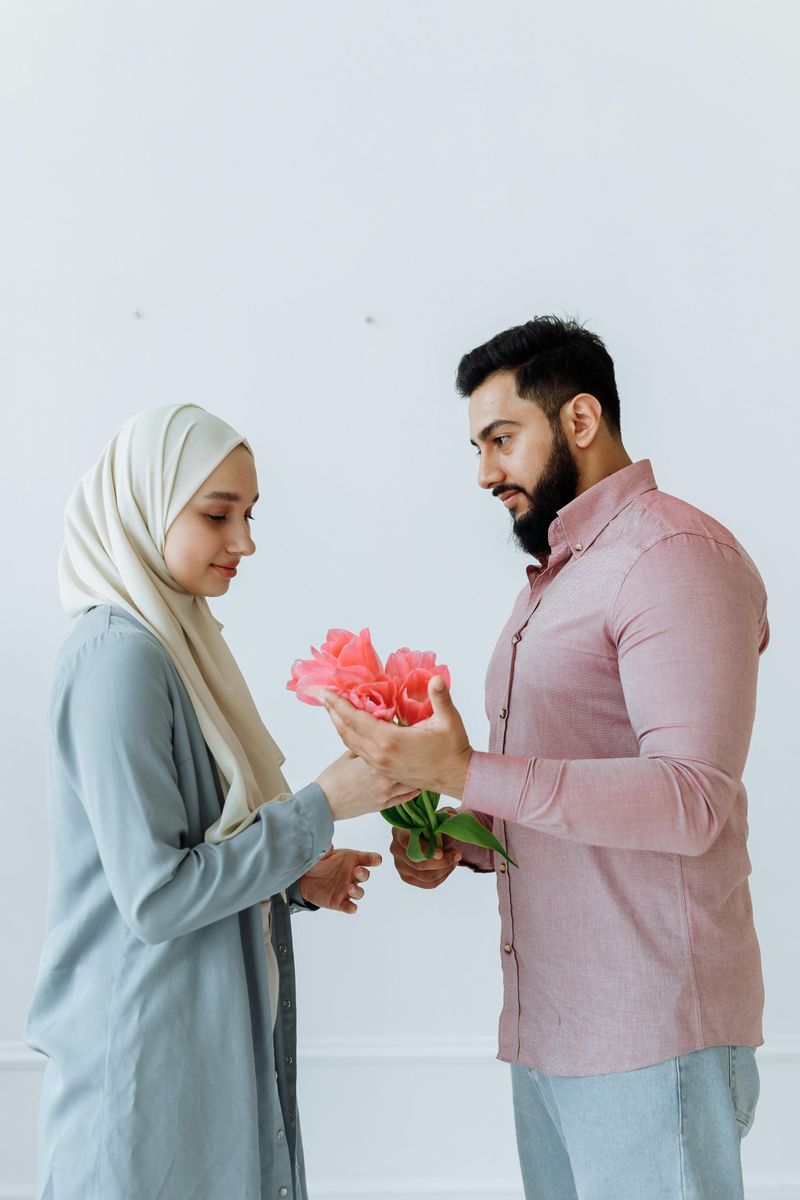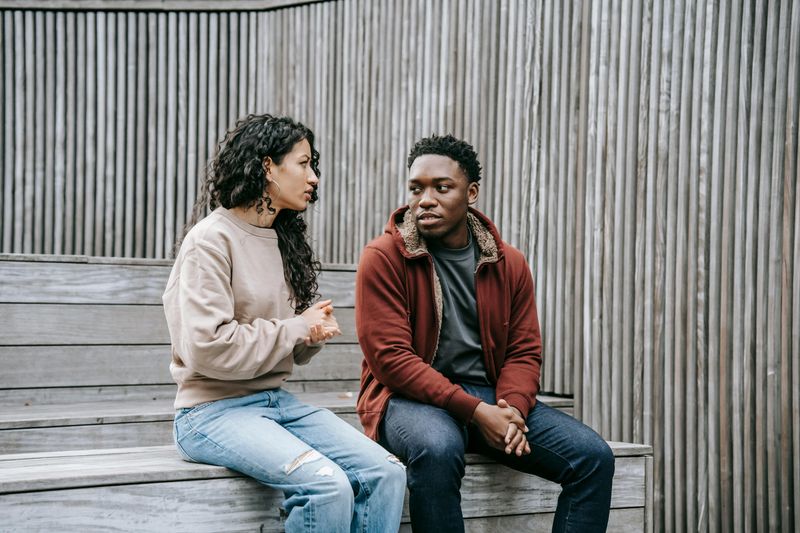Have you ever felt like you and your partner are trying to connect, but somehow missing each other? The way we give and receive love isn’t always the same, and that can create confusion even in the strongest relationships. Understanding that you might be speaking different love languages can help you both feel more seen, valued, and truly understood.
1. You Feel Disconnected Even When You’re Together
Being in the same room doesn’t always mean you’re emotionally close. Sometimes couples spend time side by side but still feel miles apart because they’re not connecting in ways that matter to each other.
Maybe one partner craves deep conversation while the other thinks simply being present is enough. This gap can leave both people wondering why togetherness doesn’t feel fulfilling.
Recognizing this disconnect is the first step toward understanding what each person truly needs. When you identify your different love languages, you can start bridging that emotional distance and create moments that actually bring you closer together instead of just occupying the same space.
2. One Prefers Verbal Affirmations While the Other Values Acts of Service
Words can mean everything to some people. Hearing “I love you” or “You’re amazing” fills their emotional tank completely. But their partner might show love by doing the dishes, fixing things around the house, or running errands without being asked.
The problem? The person who needs words might not feel loved by actions alone, while the one doing helpful tasks wonders why their efforts go unnoticed.
Both are trying hard, just in different ways. Learning to appreciate your partner’s actions as love and also giving them the words they crave creates balance. It’s about stretching beyond your comfort zone to speak the language your partner actually understands and feels most deeply.
3. One Prioritizes Gifts, the Other Values Physical Touch
Some people light up when they receive thoughtful presents, no matter how small. A surprise gift says “I was thinking of you” in a way that feels incredibly special to them. Meanwhile, their partner might crave hugs, hand-holding, or cuddling as their primary way of feeling loved.
When one brings home a gift and the other just wants a long embrace, frustration can build on both sides. The gift-giver might feel their efforts are dismissed, while the touch-oriented partner feels starved for physical connection.
Neither approach is wrong—they’re simply different. Acknowledging these preferences helps both partners make intentional efforts. Maybe combine a small token with a warm hug, meeting each other halfway.
4. Love Shown Through One Language Leads to Conflict or Misunderstanding
Imagine pouring your heart into showing love, only to have it spark an argument instead. This happens when partners express affection in ways the other doesn’t recognize or value. What feels loving to you might feel meaningless—or even annoying—to them.
For instance, buying expensive gifts when your partner just wants quality time together can create resentment rather than appreciation. They might see it as avoiding real connection.
These misunderstandings aren’t about lack of love but about mismatched communication styles. When conflict arises from loving gestures, it’s a clear signal that you need to learn each other’s emotional language. Talking openly about what makes each of you feel cherished transforms potential arguments into opportunities for deeper understanding.
5. You Feel Unappreciated Despite Your Partner’s Efforts
Your partner keeps trying to show they care, but somehow you still feel unloved or taken for granted. This frustrating situation often means they’re expressing affection in their own love language, not yours.
They might be working extra hours to provide financially while you’re desperately wanting more time together. Or they’re planning elaborate date nights when all you really need is help with daily responsibilities.
The effort is genuine, but it’s missing the mark. Instead of building resentment, try having an honest conversation about what truly makes you feel valued. Help your partner understand your specific needs so their considerable efforts can actually fill your emotional cup instead of leaving both of you feeling frustrated and misunderstood.
6. Differing Views on Public Displays of Affection
Holding hands in public might make one partner feel connected and proud, while the other feels uncomfortable or embarrassed. These different comfort levels with public affection often reflect deeper love language differences, especially around physical touch and how love should be displayed.
One person might see public affection as essential validation, while their partner considers love a private matter. Neither perspective is right or wrong, just different.
Finding compromise is key here. Maybe you hold hands sometimes but skip the intense kissing in crowded places. Respecting each other’s boundaries while occasionally stepping outside comfort zones shows real love. Talk about what feels good versus what feels forced, and create agreements that honor both people’s needs and boundaries.
7. You Give What You Want to Receive, Not What They Want
We naturally show love the way we want to receive it. If quality time fills your heart, you probably plan special outings for your partner. If you value gifts, you’re likely generous with presents. But here’s the catch: your partner might need something completely different.
This creates a cycle where both people are giving generously but neither feels truly loved. You’re both speaking, but in languages the other doesn’t fully understand.
Breaking this pattern requires intentional learning. Ask your partner directly what makes them feel most cherished, even if it seems strange to you. Then practice offering love in their language, not just yours. This shift—from giving what you’d want to giving what they actually need—transforms relationships from well-intentioned to genuinely fulfilling.
8. You Misinterpret Each Other’s Humor
Humor is subjective, and when partners have differing senses, misinterpretations can occur. Imagine one partner cracking a joke, only to be met with confusion.
This disconnect not only affects communication but can create emotional distance. Laughter is a common way to bond, and when humor misses its mark, frustration may follow.
Finding common ground with shared experiences or jokes can help. Delving into what makes each other laugh can offer insights into personal preferences, fostering a deeper connection.
9. You Have Different Conflict Resolution Styles
Conflict is inevitable, but how you resolve it matters. One may prefer direct confrontation while the other avoids it, leading to unresolved issues.
Such differences can heighten tensions, causing emotional rifts over time. Understanding each other’s approach can ease tensions and foster harmony.
Adopting a blended strategy that respects both styles can enhance communication. Discussing preferences during calm moments can pave the way for effective conflict resolution in the future.
10. Different Needs for Alone Time
Balancing togetherness and solitude can be tricky. One partner might crave alone time while the other seeks constant companionship.
This difference can lead to feelings of neglect or suffocation. Understanding each other’s needs for personal space is crucial for a harmonious relationship.
Establishing boundaries and respecting time apart can strengthen individual identities and prevent burnout. Openly discussing these needs can help create a more balanced dynamic.
11. Varied Expressions of Appreciation
Appreciation manifests in diverse ways. Some express it with words, others through gestures. This incongruity can lead to feelings of being undervalued.
Recognizing how each partner shows gratitude can improve understanding. When expressions of appreciation go unnoticed, resentment may arise.
Acknowledge and celebrate the ways your partner communicates appreciation. This mutual recognition fosters a more fulfilling relationship.
12. Different Socializing Preferences
Social preferences can vary greatly. One partner might thrive in social settings, while the other prefers intimate gatherings.
This disparity can cause friction if not addressed. Socializing needs to be balanced to accommodate both partners comfortably.
Communicate openly about social desires to prevent misunderstandings. Finding a middle ground can help both partners feel satisfied and valued.
13. One Values Tradition, the Other Innovation
Tradition and innovation offer diverse approaches to life. Conflicts arise when one partner values time-honored practices, and the other leans towards modernity.
This clash can affect decision-making processes and celebrations. Embracing both perspectives enhances lifestyle diversity.
Discussing and incorporating elements from both traditions and new ideas can enrich shared experiences. This blend fosters mutual respect and understanding.
14. Different Levels of Emotional Expression
Emotional expression varies widely. One partner might be highly expressive, while the other maintains emotional composure.
This difference can create misunderstandings about feelings and intentions. Recognizing varying emotional expressions is key to empathy.
Encourage open communication about emotional needs and preferences. This dialogue helps create a supportive environment where both partners feel understood and cherished.














